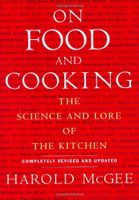Advertisement
Flour
By Harold McGee
Published 2004
Most cookies are made with pastry or all-purpose flour, but both bread flour and cake flour produce doughs and batters that spread less (thanks respectively to more gluten and more absorbant starch). A high proportion of flour to water, as in shortbread and pastry-dough cookies, limits both gluten development and starch gelation—as little as 20% of the starch in some dry cookies is gelated—and produces a crumbly texture. A high proportion of water to flour, as in batter-based cookies, dilutes gluten proteins, allows extensive starch gelation, and produces either a soft, cakelike texture or a crisp, crunchy one, depending on the method and how much moisture is baked out of the cookie. For doughs that need to hold their shape during baking—those rolled out and stamped with a cookie cutter—a high flour content and some gluten development are necessary. The baker gives fluid batters some solidity by chilling them, and then shapes them by extruding them through a pastry pipe or setting them in molds.


